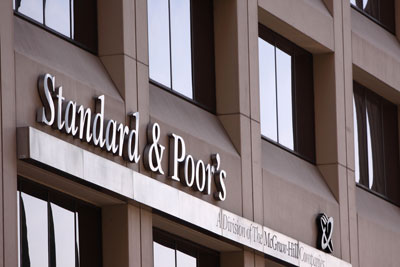By Hayes Hunt and Michael Zabel
 Every day, countless civil lawsuits are filed in this country. Every day, countless plaintiffs seek relief from our nation’s court systems, whether it be to recover for economic losses, to prevent future illegal conduct or to challenge a law or regulation. For a lawsuit to continue past the preliminary stages, each plaintiff must allege some degree of facts and a cognizable legal theory that entitle that plaintiff to relief. In turn, each defendant has an opportunity to dispute the plaintiff’s factual and legal allegations and thereby contest the validity of the action. All of this is quite elementary to even the greenest of lawyers.
Every day, countless civil lawsuits are filed in this country. Every day, countless plaintiffs seek relief from our nation’s court systems, whether it be to recover for economic losses, to prevent future illegal conduct or to challenge a law or regulation. For a lawsuit to continue past the preliminary stages, each plaintiff must allege some degree of facts and a cognizable legal theory that entitle that plaintiff to relief. In turn, each defendant has an opportunity to dispute the plaintiff’s factual and legal allegations and thereby contest the validity of the action. All of this is quite elementary to even the greenest of lawyers.
But now imagine a case where the plaintiff has an ulterior motive for filing his or her complaint: revenge for something else that transpired between the parties (this should require no great leap of the imagination). Can that ulterior motive be legally relevant to the action? And what happens when the defendant raises the issue?
Headlines in a high-profile case have recently raised these exact questions. In response to the civil suit filed against it by the federal government, financial services company Standard & Poor’s has claimed, in effect, that Uncle Sam is picking on it. According to S&P, the U.S. Department of Justice’s lawsuit against the nation’s largest credit rating firm was brought in retaliation for S&P downgrading the United States’ credit rating in 2011. S&P is now asking for discovery related to the government’s reasons for bringing the lawsuit against S&P and not its competitors.
The DOJ has denied allegations of retaliation ever since it first filed suit in the U.S. District Court for the Central District of California in February. The government’s complaint alleges that between 2004 and 2007, S&P misled investors by issuing a series of fraudulent credit ratings for collateralized debt obligations and other residential mortgage-backed securities. At the time the suit was filed, Attorney General Eric Holder said there was “no connection” between the lawsuit and S&P’s 2011 downgrade of the United States’ credit rating. Some, however, observed that the other major ratings companies, Moody’s and Fitch, which did not downgrade the government’s credit rating, were also heavily involved in rating mortgage-based securities but were not sued by the federal government.
for the Central District of California in February. The government’s complaint alleges that between 2004 and 2007, S&P misled investors by issuing a series of fraudulent credit ratings for collateralized debt obligations and other residential mortgage-backed securities. At the time the suit was filed, Attorney General Eric Holder said there was “no connection” between the lawsuit and S&P’s 2011 downgrade of the United States’ credit rating. Some, however, observed that the other major ratings companies, Moody’s and Fitch, which did not downgrade the government’s credit rating, were also heavily involved in rating mortgage-based securities but were not sued by the federal government.
With its belief that the United States was acting with a retaliatory purpose, S&P arguably had several legal options to choose from. Rule 11 of the Federal Rules of Civil Procedure prohibits an attorney from filing a pleading “for any improper purpose, such as to harass.” The federal rules apply with equal force to the United States when it is party to a civil suit, so, hypothetically, S&P could have filed a motion for sanctions under Rule 11, alleging that the United States was seeking to harass and punish S&P for its 2011 downgrade.
S&P did not pursue Rule 11 sanctions, and it appears wise not to have done so. Why? Because federal courts across the country have held that a plaintiff’s subjective intent in bringing a lawsuit is irrelevant to a Rule 11 motion if the complaint itself is nonfrivolous — i.e., when the claims are warranted by existing law and have evidentiary support. In other words, generally speaking, as long as you have a valid legal reason for a lawsuit, your ulterior motives do not matter. Indeed, for most civil cases, the “nonfrivolous purpose” principle marks the end of the court’s inquiry into a plaintiff’s reason for filing a suit.
 As the U.S. Court of Appeals for the Second Circuit has observed in Sussman v. Bank of Israel, 56 F.3d 450, 459 (2d Cir. 1995), citing the Ninth Circuit’s ruling in Townsend v. Holman Consulting, 929 F.2d 1358 (1990), there is good reason for that limited inquiry: “The complaint is, of course, the document which embodies the plaintiff’s cause of action and it is the vehicle through which he enforces his substantive legal rights. Enforcement of those rights benefits not only individual plaintiffs but may benefit the public, since the bringing of meritorious lawsuits by private individuals is one way that public policies are advanced. It would be counterproductive to use Rule 11 to penalize the assertion of nonfrivolous substantive claims, even when the motives for asserting those claims are not entirely pure.” Thus, in the S&P case, when U.S. District Judge David Carter of the Central District of California held in July that the United States had sufficiently pleaded its causes of action against S&P, that ruling effectively eliminated S&P’s grounds for a Rule 11 motion.
As the U.S. Court of Appeals for the Second Circuit has observed in Sussman v. Bank of Israel, 56 F.3d 450, 459 (2d Cir. 1995), citing the Ninth Circuit’s ruling in Townsend v. Holman Consulting, 929 F.2d 1358 (1990), there is good reason for that limited inquiry: “The complaint is, of course, the document which embodies the plaintiff’s cause of action and it is the vehicle through which he enforces his substantive legal rights. Enforcement of those rights benefits not only individual plaintiffs but may benefit the public, since the bringing of meritorious lawsuits by private individuals is one way that public policies are advanced. It would be counterproductive to use Rule 11 to penalize the assertion of nonfrivolous substantive claims, even when the motives for asserting those claims are not entirely pure.” Thus, in the S&P case, when U.S. District Judge David Carter of the Central District of California held in July that the United States had sufficiently pleaded its causes of action against S&P, that ruling effectively eliminated S&P’s grounds for a Rule 11 motion.
Instead of Rule 11, S&P chose to raise the issue of retaliation as an affirmative defense to the government’s claims. Ordinarily, such a defense would be relevant to little more than the determination of the plaintiff’s credibility. S&P’s defense, however, alleges more than just an ulterior motive — it alleges a violation of the company’s First Amendment rights. In its answer to the complaint, S&P claims that the United States is suing the company “in retaliation for [S&P’s] exercise of their free speech rights with respect to the creditworthiness of the United States.” As an S&P lawyer has explained it, the argument goes that the ratings issued by S&P and other companies are opinions and thus protected speech.
Much like a plaintiff asserting a cause of action for First Amendment retaliation, in order to prevail on its affirmative defense, S&P will need to establish that its speech was indeed constitutionally protected, and that S&P’s downgrade was a substantial or motivating factor in the United States’ decision to sue the company. If the retaliation defense is allowed to proceed, then S&P will be entitled to conduct discovery on the government’s reasons for commencing its suit against the company. Discovery on such an issue has the potential to become a massive effort on both sides. For that reason alone, expect the government to vigorously challenge S&P’s First Amendment defense at every opportunity.
Many expect that the First Amendment defense will be a tough legal row to hoe for S&P. In lawsuits brought by private plaintiffs against rating companies, several courts have already rejected the notion that financial ratings are subject to First Amendment protection. Other critics of S&P’s defense have noted that the First Amendment does not protect fraud, which is what the federal government has alleged against S&P (specifically, that the company issued ratings it knew to be wrong).
Regardless of its ultimate disposition, the issues raised in the S&P case so far highlight some interesting questions regarding a plaintiff’s decision to bring a lawsuit — especially when the plaintiff is the federal government. The general rule that emerges from our courts is that the plaintiff, whether public or private, does not need pure motives or the noblest of intentions. He or she just needs one good reason.
Originally published in The Legal Intelligencer on September 25, 2013

